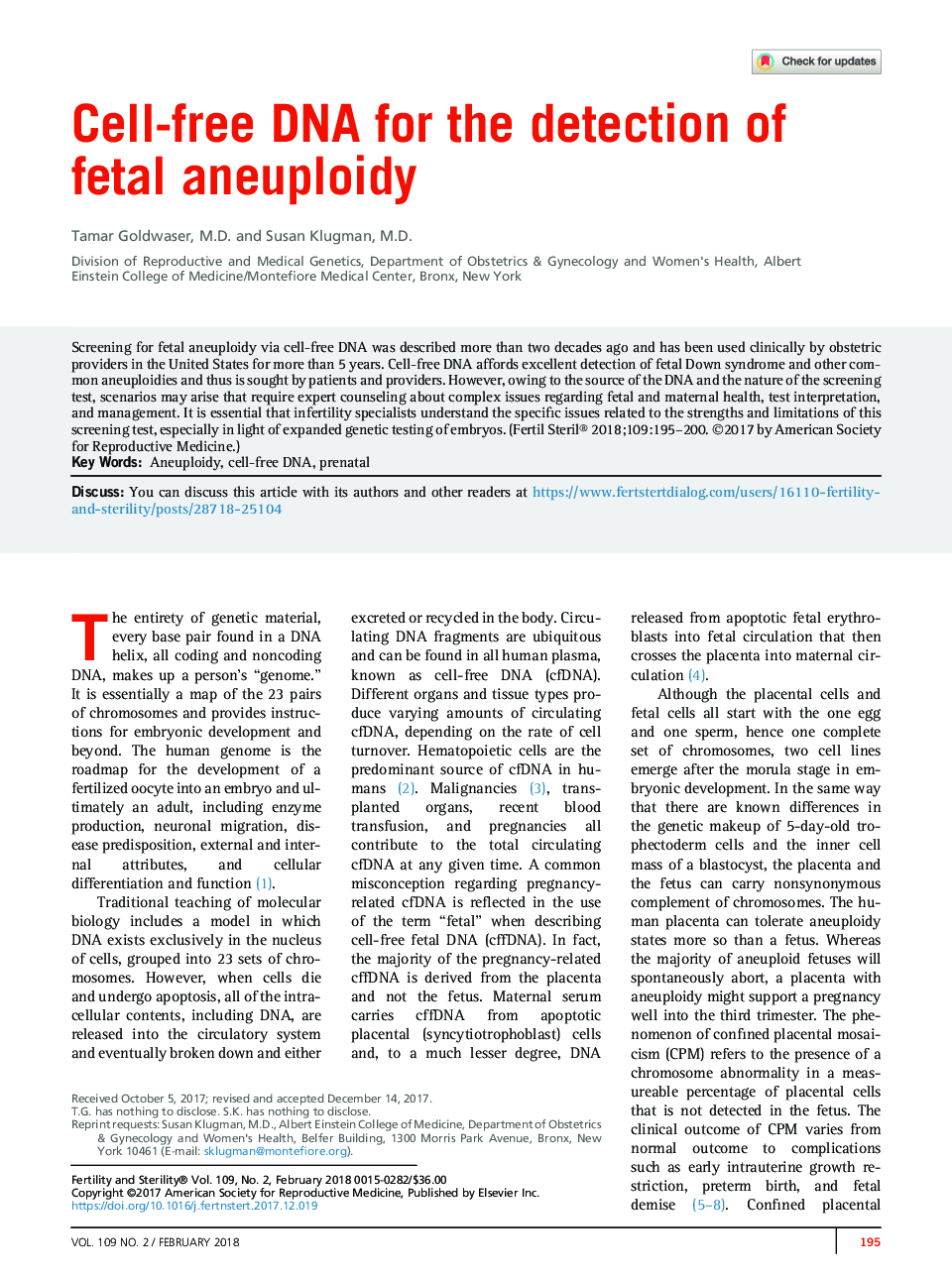| Article ID | Journal | Published Year | Pages | File Type |
|---|---|---|---|---|
| 8779753 | Fertility and Sterility | 2018 | 6 Pages |
Abstract
Screening for fetal aneuploidy via cell-free DNA was described more than two decades ago and has been used clinically by obstetric providers in the United States for more than 5Â years. Cell-free DNA affords excellent detection of fetal Down syndrome and other common aneuploidies and thus is sought by patients and providers. However, owing to the source of the DNA and the nature of the screening test, scenarios may arise that require expert counseling about complex issues regarding fetal and maternal health, test interpretation, and management. It is essential that infertility specialists understand the specific issues related to the strengths and limitations of this screening test, especially in light of expanded genetic testing of embryos.
Keywords
Related Topics
Health Sciences
Medicine and Dentistry
Obstetrics, Gynecology and Women's Health
Authors
Tamar M.D., Susan M.D.,
